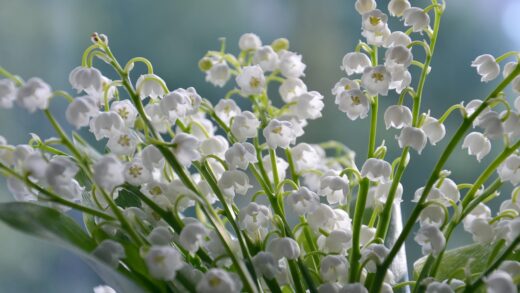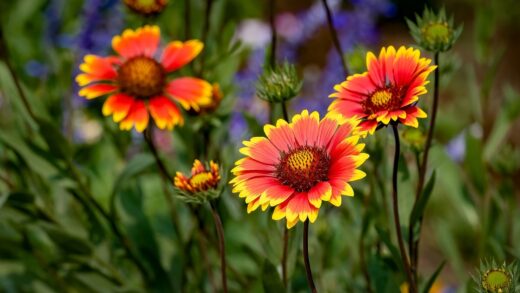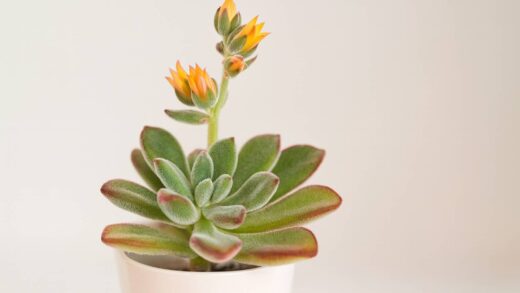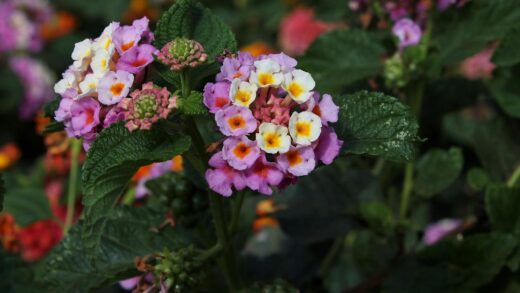Providing the appropriate nutrition is a cornerstone of cultivating a vibrant and floriferous passion flower. These vigorous vines have a significant appetite, particularly during their active growing season, and a well-structured fertilization plan is essential to fuel their rapid development and support the production of their famously intricate blooms. Simply relying on the existing nutrients in the soil is often insufficient to meet their demands. A targeted approach to feeding, which supplies the right balance of macro and micronutrients at the right time, will result in a healthier, more resilient plant with a spectacular floral display. Understanding the specific nutritional needs of Passiflora and how to meet them is what elevates cultivation from simple maintenance to a true art form.
Passion flowers require a balanced supply of the three primary macronutrients: nitrogen (N), phosphorus (P), and potassium (K). Each of these plays a distinct and critical role in the plant’s life cycle. Nitrogen is vital for vegetative growth, contributing to the development of lush, green leaves and strong stems. Phosphorus is crucial for root development, energy transfer, and, most importantly, the formation of flower buds and blooms. Potassium regulates many of the plant’s physiological processes, including water uptake and disease resistance, and also plays a role in enhancing flower and fruit quality.
While a balanced supply is important, the ideal ratio of these nutrients changes according to the plant’s stage of growth. During the initial growth phase in the spring, a fertilizer with a slightly higher nitrogen content can be beneficial to encourage strong foliage and vine development. However, once the plant reaches a good size and is ready to start flowering, it is crucial to switch to a fertilizer with a higher proportion of phosphorus and potassium. This type of “bloom booster” formula directs the plant’s energy towards producing flowers rather than excessive leafy growth.
In addition to the primary macronutrients, passion flowers also require a range of micronutrients, such as iron, magnesium, and manganese, albeit in much smaller quantities. These trace elements are essential for various enzymatic and metabolic processes, and a deficiency in any one of them can lead to specific symptoms, such as chlorosis (yellowing of the leaves). A high-quality, complete fertilizer will typically contain these necessary micronutrients, but they can also be supplied through the regular application of organic matter like compost, which is rich in a wide spectrum of trace elements.
Choosing the right fertilizer
Selecting the most appropriate fertilizer for your passion flower is a key decision that will directly impact its performance. There is a wide array of options available, including liquid, granular, and organic fertilizers, each with its own set of advantages. Liquid fertilizers are fast-acting, as the nutrients are immediately available for the plant’s roots to absorb. This makes them an excellent choice for providing a quick boost during the growing season. They are typically mixed with water and applied every two to four weeks, providing a regular and controlled supply of nutrients.
More articles on this topic
Granular, slow-release fertilizers offer a more convenient, hands-off approach. These fertilizers are composed of small pellets or granules that are mixed into the soil or applied as a top dressing. They are coated with a substance that breaks down gradually over time, releasing a steady and consistent supply of nutrients over a period of several months. This method reduces the risk of over-fertilizing and ensures the plant has access to nutrition whenever it needs it. A single application in the spring can often be sufficient for the entire growing season.
Organic fertilizers, such as fish emulsion, bone meal, and composted manure, are another excellent choice for feeding passion flowers. These materials not only supply a broad range of macro and micronutrients but also improve the overall health and structure of the soil. They enhance microbial activity, which helps to make nutrients more available to the plant, and improve the soil’s moisture-retaining capacity. While they may be slower to release their nutrients than synthetic fertilizers, they contribute to the long-term fertility and health of the growing environment.
Ultimately, the best choice of fertilizer may be a combination of different types. For instance, you could amend the soil with compost and a slow-release granular fertilizer at the beginning of the season to provide a strong foundation, and then supplement this with periodic applications of a liquid bloom-booster fertilizer during the peak flowering period. Regardless of the type you choose, it is crucial to select a formula that is well-suited for flowering plants, meaning it should not have an excessively high nitrogen content, which would prioritize foliage over flowers.
The fertilization schedule
The timing and frequency of fertilizer application are just as important as the type of fertilizer used. The fertilization schedule should be closely synchronized with the passion flower’s natural growth cycle. Feeding should commence in the early spring, just as the plant begins to show signs of new growth after its winter dormancy. This initial feeding provides the necessary resources for the plant to produce strong new stems and leaves, establishing a healthy framework for the season ahead.
More articles on this topic
Throughout the spring and summer, which is the period of most active growth and flowering, the passion flower should be fed regularly. If you are using a water-soluble liquid fertilizer, a typical schedule would be to apply it every two to four weeks. If you have opted for a slow-release granular fertilizer, a single application in the spring is often sufficient, though you should always consult the product’s instructions for its specific duration and reapplication recommendations. Consistency is key during this period to sustain the plant’s energy-intensive processes.
It is critically important to taper off and eventually cease all fertilization as late summer turns to autumn. The decreasing day length and cooler temperatures signal the plant to begin slowing its growth and preparing for winter. Continuing to feed the plant during this time can stimulate new, tender growth that is highly vulnerable to frost and cold damage. Allowing the plant to harden off naturally without the stimulation of extra nutrients is essential for its survival through the winter months.
Fertilization should be completely withheld during the winter dormancy period. The plant is not actively growing and therefore cannot utilize the nutrients. Applying fertilizer to dormant roots can be harmful, potentially burning them and leading to a build-up of salts in the soil. The feeding cycle should only resume in the following spring when the plant naturally breaks dormancy and new growth is once again visible. This seasonal rhythm of feeding and fasting is vital for the long-term health of your passion flower.
Organic vs. synthetic fertilizers
The debate between using organic and synthetic fertilizers is a common one among gardeners, and both options have their merits when it comes to nourishing passion flowers. Synthetic fertilizers are formulated with specific, concentrated ratios of nutrients that are readily available for plant uptake. This allows for precise control over the nutrients the plant receives and can lead to rapid, noticeable results in terms of growth and flowering. They are often a good choice for container-grown plants where the nutrient reservoir is limited to the potting mix.
However, a potential downside of synthetic fertilizers is the risk of over-application, which can burn the plant’s roots and lead to a harmful build-up of salts in the soil over time. They also do little to improve the long-term health and structure of the soil itself. Their focus is solely on feeding the plant, not the complex ecosystem of microorganisms that create a healthy and sustainable growing medium. Therefore, they must be used carefully and strictly according to the manufacturer’s directions.
Organic fertilizers, in contrast, are derived from natural materials such as plant and animal matter. They release their nutrients more slowly, as they need to be broken down by microorganisms in the soil before they become available to the plant. This slow-release nature makes them less likely to burn roots and provides a more sustained feeding. More importantly, organic fertilizers feed the soil itself, improving its structure, increasing its water-holding capacity, and fostering a healthy population of beneficial microbes.
A holistic approach often involves integrating both types of fertilizers. For example, building the soil with organic matter like compost provides a nutrient-rich and biologically active foundation. This can then be supplemented with targeted applications of a synthetic bloom-booster fertilizer during the peak flowering season to provide the extra phosphorus and potassium needed for a spectacular floral display. This integrated approach leverages the soil-building benefits of organic matter with the precision and rapid action of synthetic nutrients, offering the best of both worlds for your passion flower.
Recognizing nutrient deficiencies
Observing your passion flower’s leaves is one of the most effective ways to diagnose potential nutrient deficiencies, as the plant will often display visible symptoms when it is lacking a specific element. A general yellowing of the leaves, particularly the older, lower leaves, is often a sign of a nitrogen deficiency. Since nitrogen is a mobile nutrient, the plant will move it from older tissues to support new growth, causing the lower leaves to yellow first. Stunted growth and a general lack of vigor can also accompany this symptom.
A phosphorus deficiency can be more subtle but often manifests as a dull, sometimes bluish-green, discoloration of the leaves. In some cases, the leaves may also develop a purplish tint, particularly on the underside. The most significant indicator of a phosphorus deficiency, however, is poor flowering. If your passion flower is producing lush, green foliage but very few or no blooms, a lack of phosphorus is a likely culprit. It can also lead to weak root development.
Potassium deficiency typically appears as a yellowing or browning along the edges or margins of the leaves, particularly on the older foliage. The center of the leaf may remain green while the edges look scorched or burnt. Potassium is vital for the plant’s overall resilience, so a deficiency can also lead to weaker stems and an increased susceptibility to pests and diseases. The plant may also struggle to withstand drought or temperature extremes.
Deficiencies in micronutrients can also occur. For example, an iron deficiency often causes interveinal chlorosis, where the leaves turn yellow, but the veins remain green. This symptom typically appears on the newer, younger leaves first. A magnesium deficiency can present in a similar way but often affects the older leaves, sometimes with a distinctive V-shaped yellowing pattern. The best way to prevent these deficiencies is to use a complete, balanced fertilizer that includes a full spectrum of micronutrients and to maintain healthy, organically rich soil with a proper pH, as this affects the plant’s ability to absorb nutrients.


















